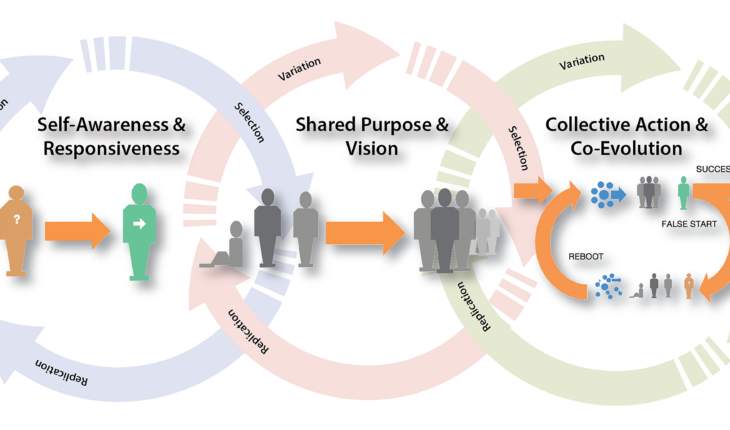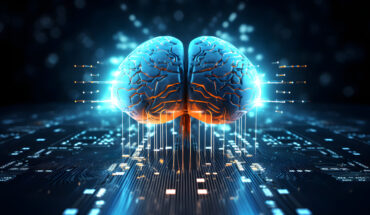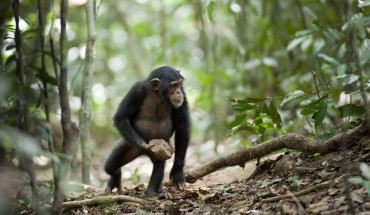By: Farzin Espahani
Introduction
The study of human evolution has traditionally focused on either biological or cultural factors, often treating them as separate forces shaping our species. However, the Dual Inheritance Theory (DIT) presents a paradigm that integrates both biological and cultural evolution, suggesting that human development is influenced by the interaction between genetic inheritance and cultural transmission. This perspective has gained significant traction in evolutionary anthropology, providing a comprehensive framework to understand how humans have adapted to diverse environments.
The theory suggests that culture itself is an evolutionary system that operates parallel to genetic inheritance, allowing humans to adapt more rapidly than what genetic mutations alone would permit. This blog post delves into the origins of DIT, the key contributions of anthropologists and evolutionary biologists to the theory, and its implications for understanding human behavior, social structures, and technological advancements.
Origins of Dual Inheritance Theory
The concept of culture as an evolutionary force was initially discussed by scholars such as Charles Darwin, who recognized that habits, customs, and learned behaviors influenced survival. However, it was not until the late 20th century that the Dual Inheritance Theory was formally articulated by scholars like Robert Boyd and Peter J. Richerson in their seminal work Culture and the Evolutionary Process (1985). They argued that cultural transmission functions as a parallel system to genetic evolution, allowing human populations to adapt to environmental changes more efficiently than genetic mutations alone.
At the core of DIT is the recognition that human beings are unique in their capacity for cultural transmission—passing down knowledge, skills, and beliefs across generations in ways that shape evolutionary outcomes. This is different from biological inheritance, where changes occur primarily through genetic recombination and mutation.
Key Tenets of Dual Inheritance Theory
DIT posits that human evolution is driven by two interacting inheritance systems: genetic inheritance and cultural inheritance. The main principles of the theory include:
- Culture as an Evolutionary System
- Culture evolves through processes analogous to natural selection, including variation, competition, and inheritance. Behaviors, traditions, and knowledge are subject to selection pressures similar to genes.
- Cultural Evolution Influences Genetic Evolution
- Cultural practices can create selective pressures that drive genetic changes. A well-known example is the evolution of lactose tolerance in human populations that domesticated cattle and consumed dairy products.
- Multiple Transmission Pathways
- While genetic inheritance follows a vertical path from parents to offspring, cultural inheritance can be:
- Vertical (parent to child)
- Horizontal (peer to peer)
- Oblique (from non-parental elders or teachers to younger generations)
- One-to-many (broadcasting information widely)
- While genetic inheritance follows a vertical path from parents to offspring, cultural inheritance can be:
- Cultural Adaptation Outpaces Genetic Adaptation
- Culture allows humans to adapt rapidly to environmental changes, in contrast to the slower pace of genetic evolution. For instance, technological innovations such as fire, tools, and agriculture transformed human survival strategies long before corresponding genetic adaptations could emerge.
- Cultural Traits Can be Maladaptive
- Unlike genetic evolution, which generally favors traits that enhance survival and reproduction, cultural evolution can lead to maladaptive behaviors. Examples include harmful traditions (e.g., foot-binding in China) or modern challenges like obesity stemming from the abundance of processed food.
Contributions from Anthropologists and Evolutionary Biologists
Several scholars have expanded on Boyd and Richerson’s ideas, contributing to our understanding of how culture and biology interact in human evolution.
- Cavalli-Sforza & Feldman (1981) – These geneticists and anthropologists developed mathematical models to describe cultural transmission and its effects on gene frequencies in populations.
- Joseph Henrich (2015) – His work on The Secret of Our Success highlights how cumulative culture has been the driving force behind human adaptation, arguing that social learning mechanisms allow humans to survive in diverse environments.
- Michael Tomasello (1999, 2014) – A developmental psychologist who proposed that humans possess unique cognitive abilities, such as shared intentionality, that facilitate cultural learning and transmission.
- Kevin Laland (2017) – His work on niche construction theory complements DIT, emphasizing how human-created environments exert selection pressures that shape both cultural and biological evolution.
Implications of Dual Inheritance Theory
1. Understanding Human Cooperation
One of the most profound implications of DIT is its role in explaining human cooperation. Unlike other primates, humans engage in large-scale cooperation with non-kin. Cultural norms, institutions, and shared belief systems have evolved to promote group cohesion, and these cultural mechanisms have reinforced prosocial genetic traits over generations.
2. The Role of Technology and Innovation
The rapid advancement of technology exemplifies how cultural inheritance allows humans to adapt at unprecedented rates. The development of agriculture, industrialization, and digital communication are examples of how cultural evolution continually reshapes human societies.
3. Language and Communication
Language is a prime example of dual inheritance. It is both a product of biological evolution (requiring neurological and anatomical adaptations) and a cultural construct that is learned and passed down through generations. The emergence of written language further accelerated cultural accumulation and dissemination.
4. The Evolution of Social Institutions
Religious, legal, and economic institutions can be analyzed through the lens of DIT. These institutions evolve over time through cultural selection, shaping human behavior in ways that influence survival, cooperation, and reproductive success.
5. Health and Medicine
DIT also sheds light on the evolution of health-related behaviors. For example, cultural adaptations such as cooking food, medicinal practices, and hygiene norms have significantly influenced human health and longevity, sometimes even outpacing genetic adaptations in importance.
Challenges and Criticism
Despite its strengths, DIT is not without criticism. Some scholars argue that it overemphasizes culture’s role in shaping human evolution while underestimating the influence of genetic predispositions. Others contend that cultural evolution lacks the same predictive power as biological evolution, given its complexity and variability.
Additionally, defining what constitutes a “cultural trait” versus an innate behavior remains a challenge, as many human behaviors result from intricate gene-culture interactions. However, ongoing interdisciplinary research continues to refine the theory and address these concerns.
Conclusion
Dual Inheritance Theory provides a powerful framework for understanding human evolution, bridging the gap between biological and cultural perspectives. By acknowledging that humans are both genetically and culturally evolved beings, DIT allows for a more nuanced appreciation of how we have adapted, survived, and thrived across millennia.
The interplay between genetic inheritance and cultural transmission continues to shape human societies in profound ways, influencing everything from cooperation and technology to health and social norms. As research in evolutionary anthropology advances, DIT will likely remain a cornerstone theory, helping us decipher the intricate mechanisms behind the success of our species.
Further Reading:
- Boyd, R., & Richerson, P. J. (1985). Culture and the Evolutionary Process. University of Chicago Press.
- Cavalli-Sforza, L. L., & Feldman, M. W. (1981). Cultural Transmission and Evolution: A Quantitative Approach. Princeton University Press.
- Henrich, J. (2015). The Secret of Our Success: How Culture Is Driving Human Evolution, Domesticating Our Species, and Making Us Smarter. Princeton University Press.
- Laland, K. N. (2017). Darwin’s Unfinished Symphony: How Culture Made the Human Mind. Princeton University Press.




